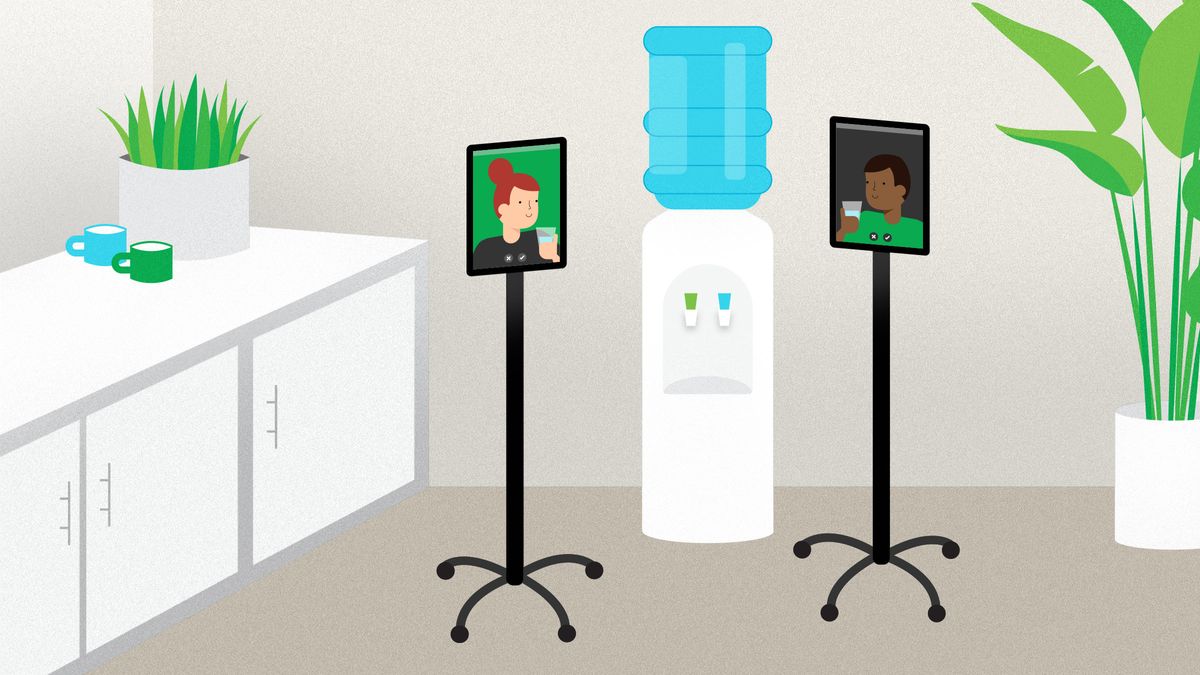Below is an article originally written by Rose Jen, Product Manager at PowerToFly Partner CircleCI, and published on July 26, 2019. Go to CircleCI's page on PowerToFly to see their open positions and learn more.
Hi! I'm Rose Jen, a product manager at CircleCI. I've run a number of interviews here at CircleCI, and the #1 question I get asked is "What is your experience with the distributed culture at CircleCI?"
I have worked before in companies that allowed remote work. They've offered their teams access to tools to make remote working possible. I've also worked on teams which start out as colocated, but have become distributed by necessity as team members move. Often in these cases, the folks working remotely become increasingly left out and distanced from the rest of the team. Given those experiences, I was initially hesitant about working on a distributed team, specifically with concerns that communication could be difficult, or worse, that I might feel disconnected from my team. However, during my time here at CircleCI, I've noticed that the company's deliberate work on building an inclusive distributed culture put many of my fears at ease. And through this experience, I've seen the difference these efforts make, and learned that merely allowing employees to work remotely isn't enough.
While CircleCI has been a distributed team since the beginning, we do have an official headquarters in San Francisco. To support our teammates all over the globe feeling fully connected, included, and empowered, we work hard everyday toward building a "remote-first" culture. The difference between a team which allows remote work, and one which strives to be remote-first may sound like a technicality, but in practice makes a world of difference to our team members, regardless of where they are. Remote-first means that remote employees are not an afterthought. Being remote-first means being intentional about not just the tools that are used, but also how we plan a company culture to be as inclusive as possible of remote workers while allowing everyone to be the most productive.
For anyone considering joining us, or for those who are looking to foster a remote-first culture in their own organization, here are 5 ways of making it work:
Videoconferencing by default
We rely heavily on videoconferencing at CircleCI – it's quite impossible to go through a workday here without some sort of videoconferencing (we use Zoom). To be maximally inclusive, we are very specific about how we use videoconference tools. First, as a company we invest heavily in hardware and software that makes our reliance on vidoeconferencing work. Every single conference room at our office is fully video-enabled. On the flip side, we expect our employees to have access to high speed internet connections, and to work from a location where they can be clearly heard and seen – being unable to hear someone on a call won't cut it. The success of this tactic relies on everyone's participation. We also made the choice early on to grant every employee full access Zoom accounts – so every team member feels empowered to call meetings, whether large brainstorms or ad-hoc chats.
Additionally, we have practices about how we disseminate information from video meetings. We include a Zoom link with every event invite, so that no matter where the participants are, they can join. At CircleCI, we have a general rule that if there are team members in various time zones who won't be able to attend a meeting, we record the meeting and make it available for viewing at a later time. This gives folks in all time zones the flexibility to manage their day the way that best suits them.
Accessible, structured, and documented team meetings
At CircleCI, most product development teams have a variety of weekly get-togethers: planning meetings, daily standups, brainstorms, design reviews, and retros. These are all done via videoconferencing. Depending on the type of meeting, we also utilize digital tools (Google Docs, for example) that everyone has access to in realtime, through which we facilitate discussions and document decisions as they're made. For example, we use Google Docs to outline brainstorming or retro discussion topics. For planning meetings and standups, we go to our shared Jira board that shows our deliverables and progress, so that everyone is following along in realtime while the discussion is happening. For design reviews, we use Invision, a design prototype tool, that allows designs to be shared across the team and allows team members to provide comments. These have helped us have productive meetings anywhere the team is. I personally don't miss cramming an entire team into the same meeting room, and I'm certainly glad to be freed of the struggle to find available meeting rooms.
Document, document, document
Who doesn't love good documentation? In a remote-first environment, pay special attention to physical artifacts that may disadvantage team members who are not colocated with you. There will always be things that occur in realtime (quick sketches, Post-its) when a few folks are in the same room, but we take efforts to document and share the results of those IRL brainstorms with the team at large and take lots of pictures of any diagrams, roadmaps, and other outcomes, so that everyone can access them afterwards. Find ways to ensure that remote team members aren't just listening in, and look for ways they can participate in realtime. Zoom offers collaborative whiteboarding that you can do from inside a conference call. Even with the best tools, this process will often still be imperfect, and therefore requires mindfulness and some creativity from everyone involved.
No hallway conversations
This doesn't mean that you can't talk to your coworkers face-to-face or around the watercooler. But it does mean that if you have work-relevant conversations that are not digitally recorded, they should somehow get recorded after the fact: put a summary in chat, write up a short document, or find another way to make sure that information can be referred to by remote team members. We also encourage our team members to have impromptu "hallway" conversations over video, whether it's to ask a question or to quickly get the team aligned on a specific topic. Regardless of location, there are some things only a quick 1-on-1 chat can clear up.
Plan together time
Whenever possible, bring your distributed teams together! There's something really nice about being able to spend time with your far-away coworkers in real life. At CircleCI, we plan for teams to meet at a location together at least once a year. Departments do the same as well. It'll require serious logistical planning and a monetary budget, but it will be well worth it as a team-building investment.
What I've shared isn't a definitive guide to operating a distributed company – just some things I've noticed at CircleCI that have made a difference for me and my colleagues while working on a distributed team. It's important to mention: we are always re-evaluating our processes, and looking for places to refine. Things will change. For example, now that we are expanding more globally, it has changed the landscape of what being distributed really means (for example, getting a team together whose members are 1 hour apart vs. 8 hours may mean folks in San Francisco scheduling meetings earlier in the day to accommodate the schedules of team members across North/South America and Europe). These changes have pushed us to change the way we use our tools, and given us opportunities to continue to iterate and improve. Overall, if you're in an organization looking to become more remote-friendly, we encourage you to keep an open mind and experiment to find what will work best for you.





